North America Weekly Snow Roundup #291
Weekly Snow News for North America, updated December 3, 2025: Season start remains challenging with light snowfall across the west; East Coast leads with deeper bases.

Discover one of these nearby mountain peaks and start planning your adventures.

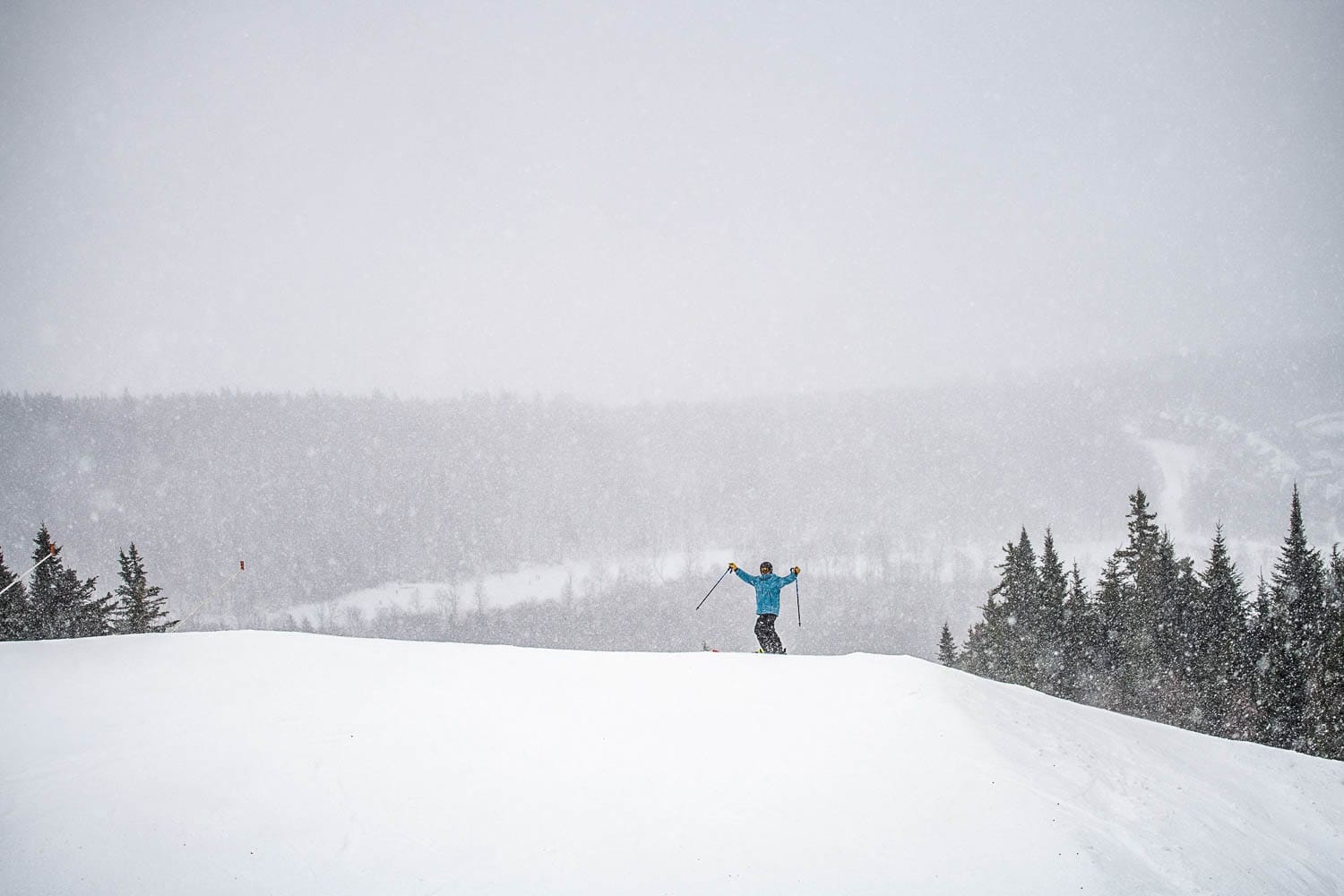
Weekly Snow News for North America, updated December 3, 2025: Season start remains challenging with light snowfall across the west; East Coast leads with deeper bases.
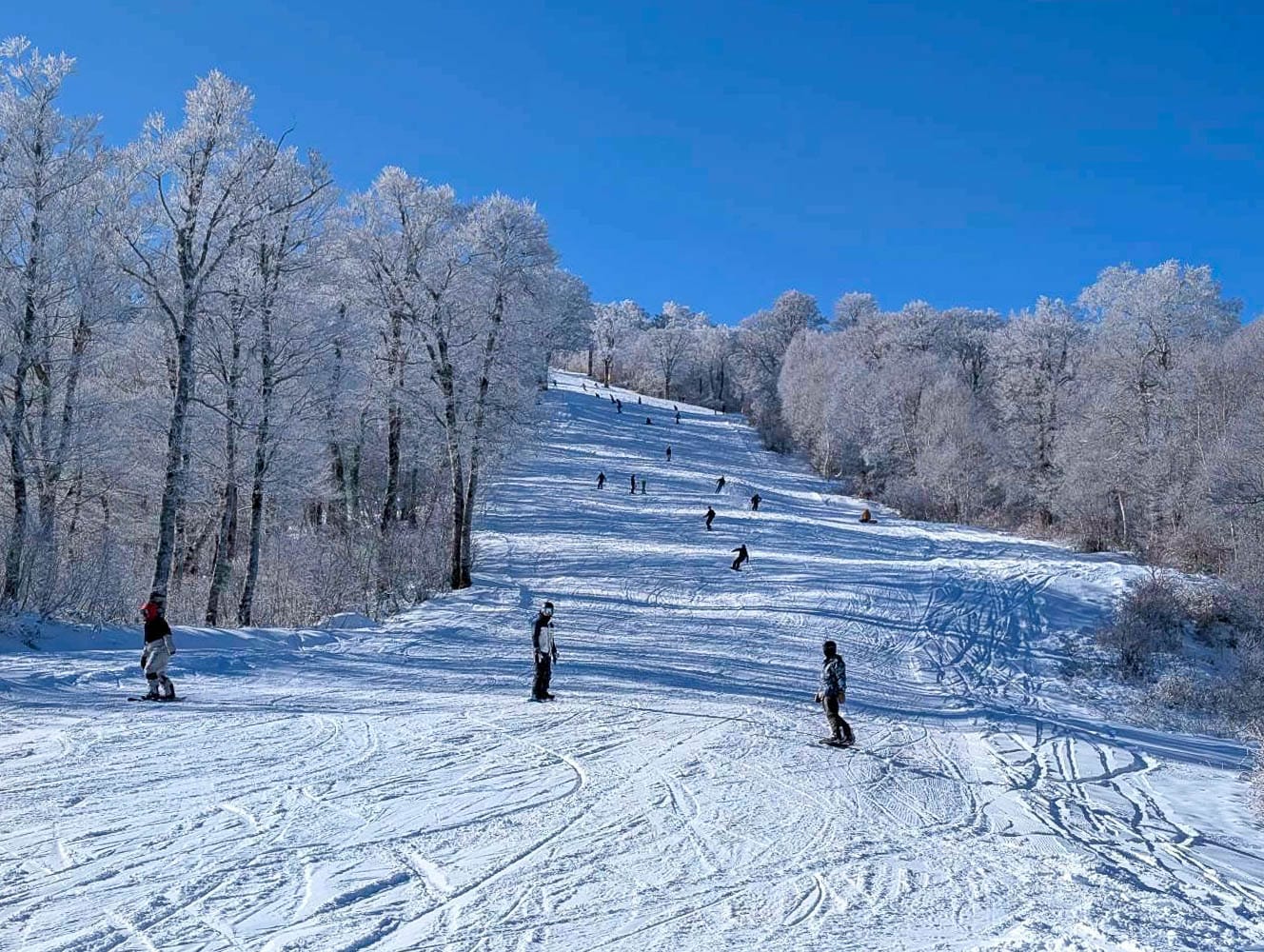
Weekly Snow News for Japan, updated 3 December 2025: mixed early-season snow but fresh powder building in the north.
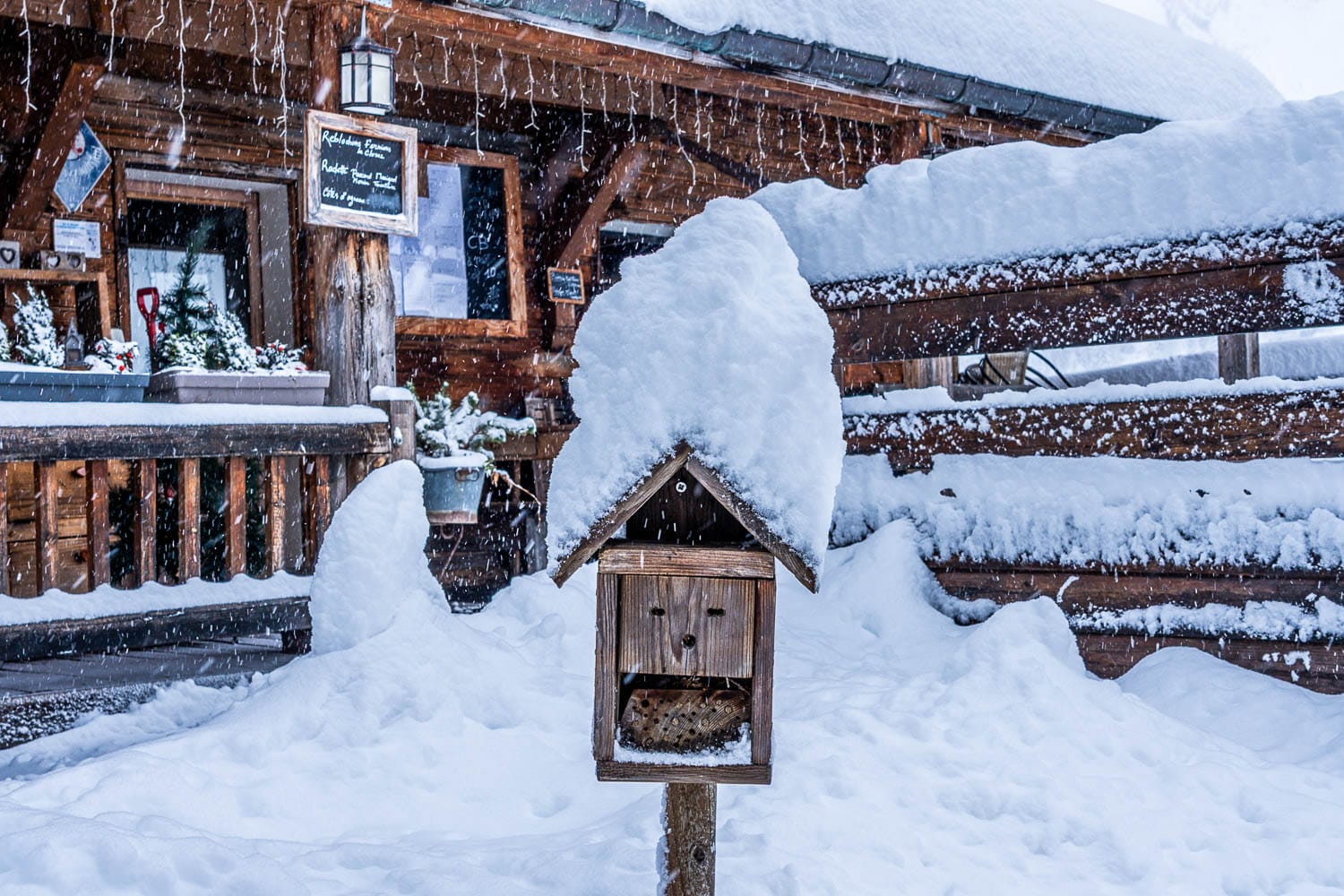
Weekly Snow News for Europe, updated 3 December 2025: early-season openings from the Alps to Scandinavia and the Pyrenees.
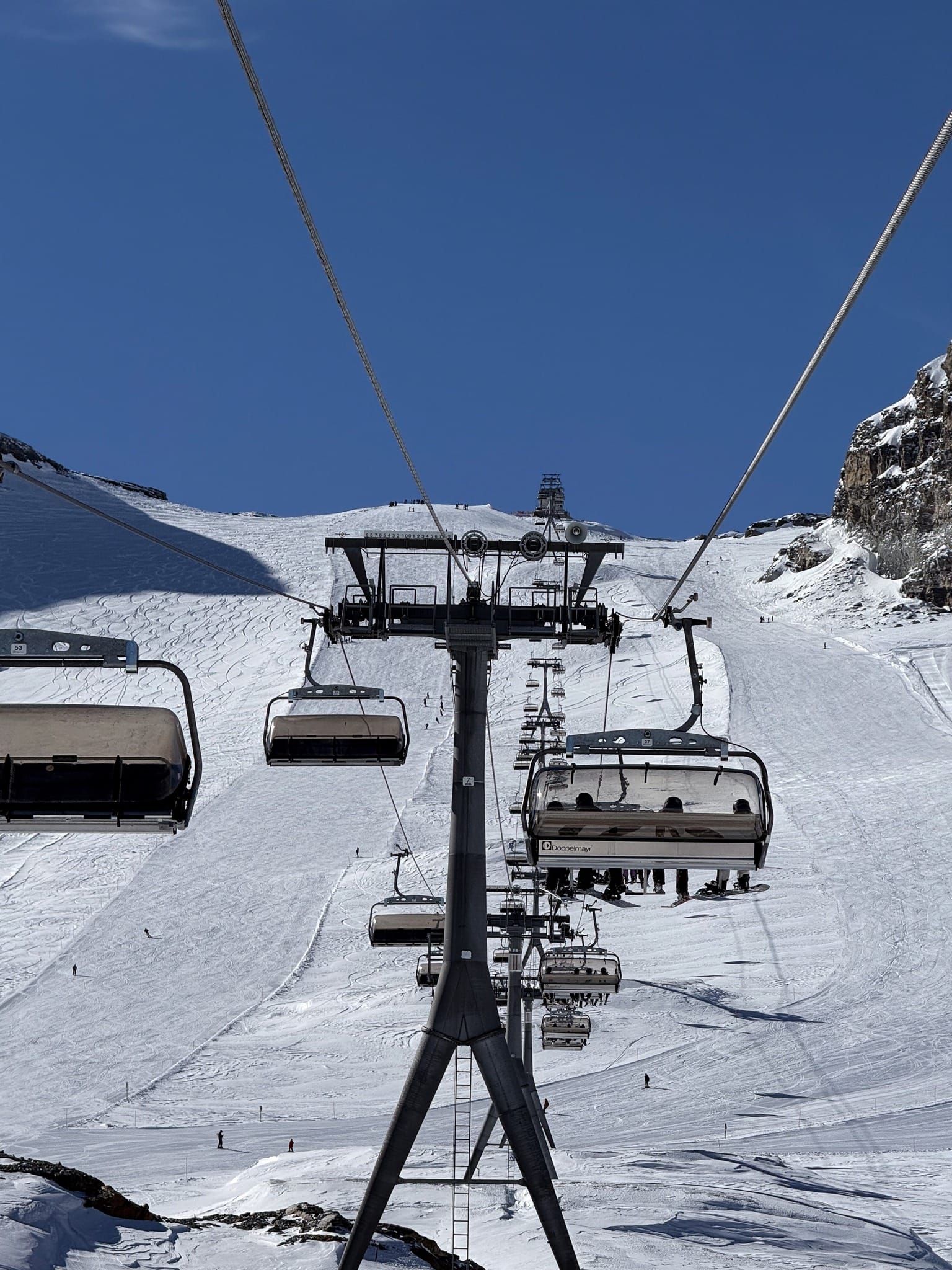
Ski areas in Austria, France, Italy and Switzerland are competing to see which can offer the most terrain to early season skiers with four areas at or near to offering 160km (100 miles) of slopes already.
Discover more articles and updates in the Whiteroom.
From mountain peaks and trails to huts and lodges — covering 120 countries with everything you need to plan your next adventure.
Thoroughly tested and trusted by climbers and mountaineers worldwide for accurate, reliable forecasts in challenging mountain conditions.
Share your experiences, keep a record of your travels, and learn from our global community of mountain enthusiasts.
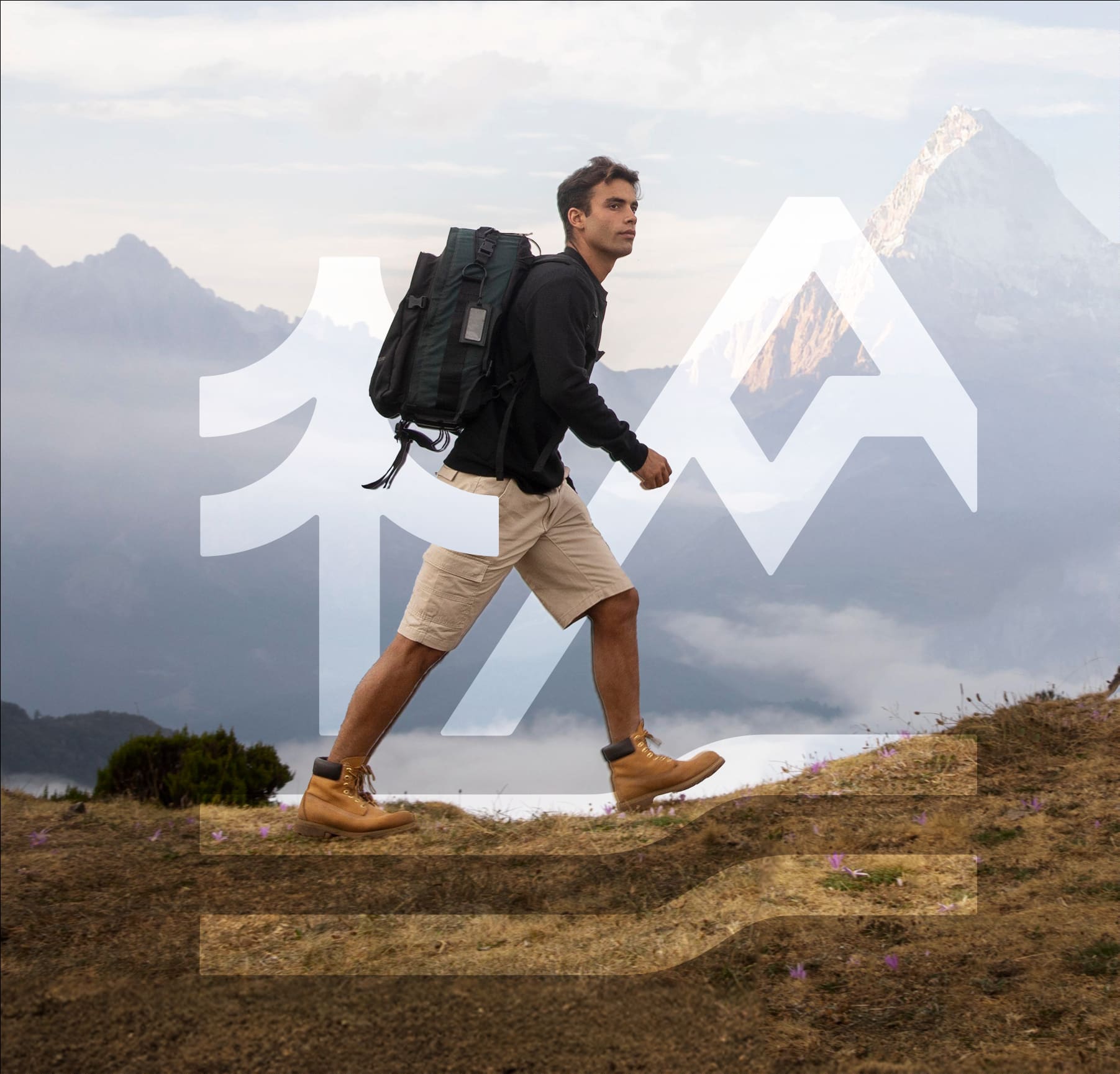
Get ahead of the elements with MountainPro: unlock 12-day forecasts, hourly detail, and offline maps to confidently plan all of your adventures.
Get PremiumElevate your mountain adventures with the official Mountain-Forecast app. Detailed mountain weather forecasts for over 12,000 peaks around the world.
Mountain-Forecast is one of the most popular sources of detailed mountain weather.
Trusted by climbers, skiers, mountain bikers, and outdoor sport enthusiasts, our mountain forecasts cover multiple elevations and weather updates every six hours.
First-hand mountain reviews, route tips, and trail guides
Ouvert du 24 Juin au 30 Septembre à tous les jours de 10 h à 16 h. Droit d'accès requis. Plus d'info sur le site de Parcs Québec.
Open from June 24th to September 30th each day between 10 am to 4 pm. Need access pass. More info on website of Parks Quebec.
Pascal Lévesque
Canada
26 Sep 2011
This is not overly difficult to climb, it's actually a gentle hill most of the way up until you reach the final 100 meters or so, where it gets steeper. Good footwear, and perhaps a pair of trekking poles will make it easier. Ropes and such are not required.
It is roughly 4.5km on the "easy" path. Give yourself lots of time to take in the views. It gets dark fast when the sun is going down, and footing can be tricky.
Watch out for the invasive species "Giant Hog Weed". They do a good job of blocking it off, but they can't get all of it. Touching it can be very painful, causing skin burns, and getting it in your eyes can cause blindness.
About halfway up there is a small cabin, (suitable for a snack-break). At the summit, there is also a building that used to be used as a fire watch tower. The views are fantastic when the weather is cooperating.
Please sign into and out of the trail at the parking lot, so the park warden is not wasting time looking for you unnecessarily.
Mike
Canada
12 Dec 2017
Three of us submitted Hamlin last Saturday, Feb 17. We started out of our lean-to down in Roaring Brook. Our intent was to tag Hamlin, proceed to Katahdin, South Peak, Knife Edge, Pamola then down via Helon Trail, however we didn't leave Roaring Brook until 7:30am.
We arrived at Chimney Pond around 9:15am and after speaking with Greg, the Ranger assigned to Chimney who we'd spoken too twice down at Roaring Brook about our planned route, determined we probably weren't going to make the full route given our late departure. He indicated, and we agreed to, if we were only standing on Hamlin by 1pm and not any further, we should return via the same route.
Our original route was to take the N. Basic Cutoff after crossing the frozen Basin Pond, however we missed it and continued to Chimney. Not a huge issue as we picked up North Basin just before Chimney. This trail hadn't been used in a few days. Greg indicated we'd be most likely breaking trail. It was obvious where the trail was as it was packed down but with a fair amount of fresh powder. There was flagging tape in tree branches as well to guide us.
It's a relatively steep, winding trail. We donned snowshoes just as we broke out of treeline. At that point in the morning, approximately 10am, one could've either had snowshoes or crampons. The snow was quite hard with only a few post holes by one in our team who didn't donn snowshoes right away. The pitch is quite steep for the first .5 mile out of treeline. We used trekking poles the entire way up but it's exposed as you break from treeline so an ice axe would also be useful for arresting a slip.
Further up, the terrain becomes a mix of hard snow and rock, totally doable with crampons with slow steady progress. We reached Hamlin Peak around noon with bluebird, clear skies and steady winds. At that point even though we'd beat the 1pm turnaround, I felt not strong enough to complete the full route safely after the 13 mile ski/pulk in the day before, so we turned around and came back the same route.
Things we will change next year for this attempt:
1 - Leave a rest day in between the ski/pulk in and the summit attempt
2 - Either pack lighter for the pulk or secure one of the cabins so as not requiring a four season tent, extra clothing, etc.
3 - True alpine start by 4am if we leave from Roaring Brook
4 - Consider pulking in all the way to Chimney Pond so right at trailhead for summit attempt
If you are pulking like the vast majority of folks in Winter, the trail from Roaring Brook to Chimney, you'll need to switch from skis to snowshoes as the grade become much too steep in various sections to ski/herringbone up. The grade is MUCH steeper than sections you'll ski up on Park Tote or Roaring Brook roads.
Joshua Brock
United States
23 Feb 2018
A big thank you to whoever has been improving this trail!! Several ladders have been replaced with some expertly crafted stone stairways, as well rock placement to protect the trail from water erosion.
To answer Heidi's question, the fire on the summit did not affect the trail. Also wooden walkways have been installed around the Beaver Dam to keep your feet dry.
Tim Arsenault
United States
13 Nov 2018
Once you get to the actual trailhead by either hiking or driving up Notch Rd (narrow 4x4s with good ground clearance only), be prepared for a rocky, root-y, muddy, steep ascent! As you approach the summit there’s more ledge and the vegetation becomes the stunted trees and ground cover of the alpine zone. There’s quite a bit of White Mountain Saxifrage scattered around.
The view from the summit is AMAZING, even on a hazy day. I can’t wait to go up there this winter. I wouldn’t take the hiking trail in winter, though; the snow gets deep enough that you could easily be walking on a cornice without knowing it. A better route is bushwhacking up the westernmost spur starting at the base of Notch Rd. The going is smooth for the most part. You will want snowshoes, preferably on the large size for your weight because the snow can be soft and very deep - as in 6-10’ or deeper on the lee (south) side. Total distance from the bottom of Notch Rd to the summit is about 2 miles, depending on how direct a route you take.
Phil Smith
United States
06 Aug 2019
A fairly easy trail, with only a few short steeper sections if you follow the main trail. This is wide enough for an ATV or snowmobile, which is how the radio repeaters at midway up and at the summit are accessed. For me the hardest part is the loose rocks, it’s easy to turn an ankle if you’re not careful. In the springtime it’s very wet from snowmelt runoff, and parts of the trail that don’t get much sun will keep snow very late. 2 years ago I hiked up and camped on Memorial Day weekend and starting before the first radio repeater there was 2 feet of snow on over half the trail all the way to the summit. Snowshoes would have been nice! There’s a level area after the first repeater that can be very muddy, or even submerged in the spring.
You can knock off about 1/2 mile if you take the shortcut, though it’s very steep because it basically goes straight up the mountainside. When you get to the first radio repeater, there’s a very narrow trail marked by a cairn on the right about 50 feet past the gate. It’s fun to go up, but due to it being damp all the time and slippery I’d think twice about descending it.
At the summit there’s a solar panel array and a locked equipment shed for the repeater. There’s also a steel viewing platform, and on a clear day you can see forever. I like camping here, though as rocky as the summit is it can be hard to find a somewhat level spot with enough room for my 1P tent to point an end into the wind. A narrow spot between the shed and solar panels will block wind from most directions, but is out of level enough to make sleeping difficult.
On a clear, moonless night the summit is a stargazer’s dream. There’s no light pollution to speak of, and the Big Dipper & Cassiopeia are so bright I can see them even without my glasses. The Milky Way looks like a brushstroke across the sky.
Phil Smith
United States
05 Jul 2021
Captured by our global community. Share your best shots here.
Ama Dablam by Sergi Magriñà
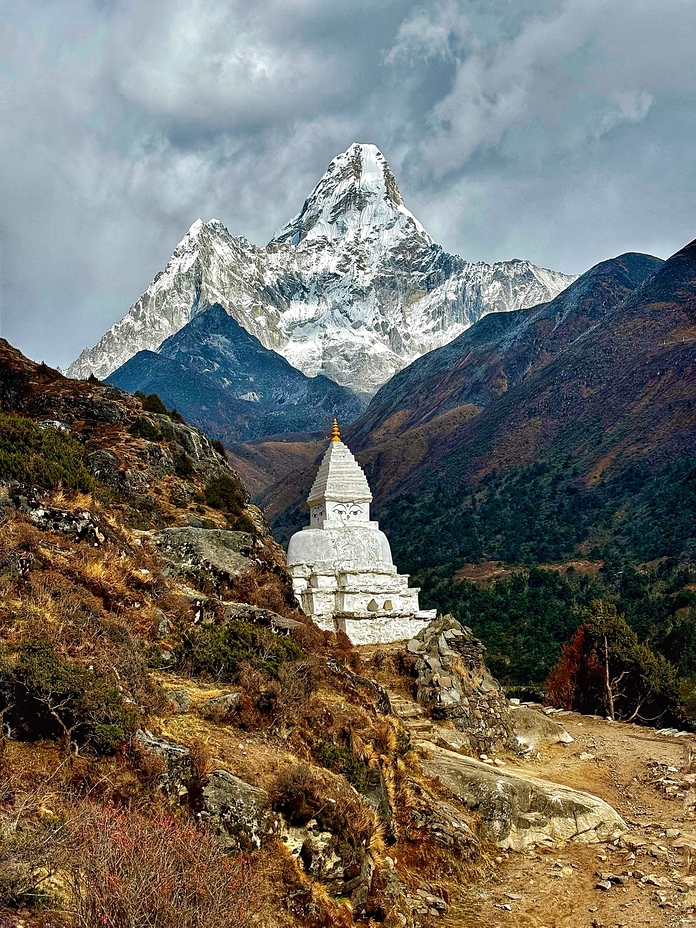
Fitz Roy and Poansenot
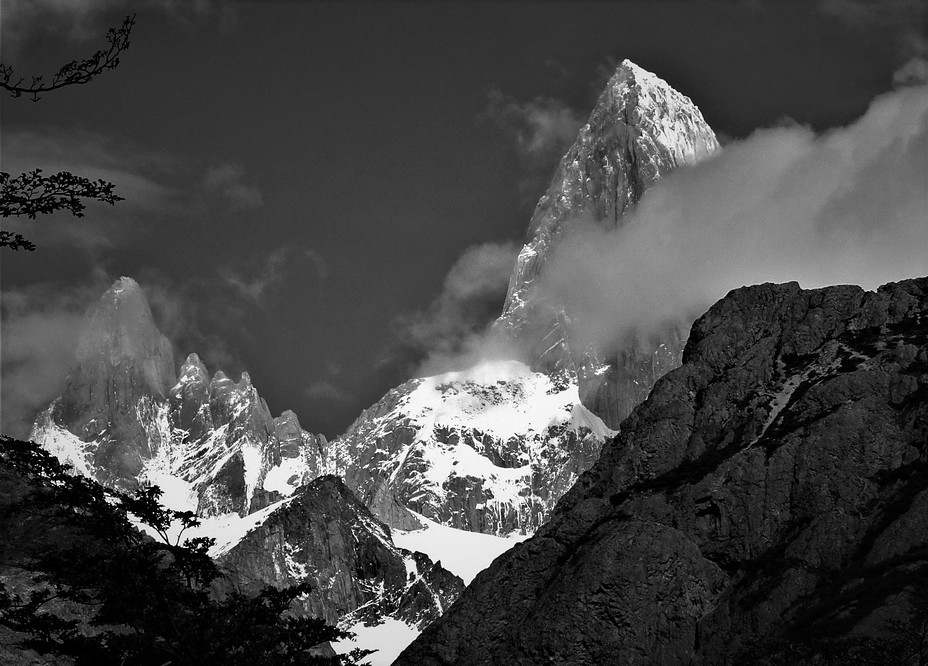
Grandes Jorasses
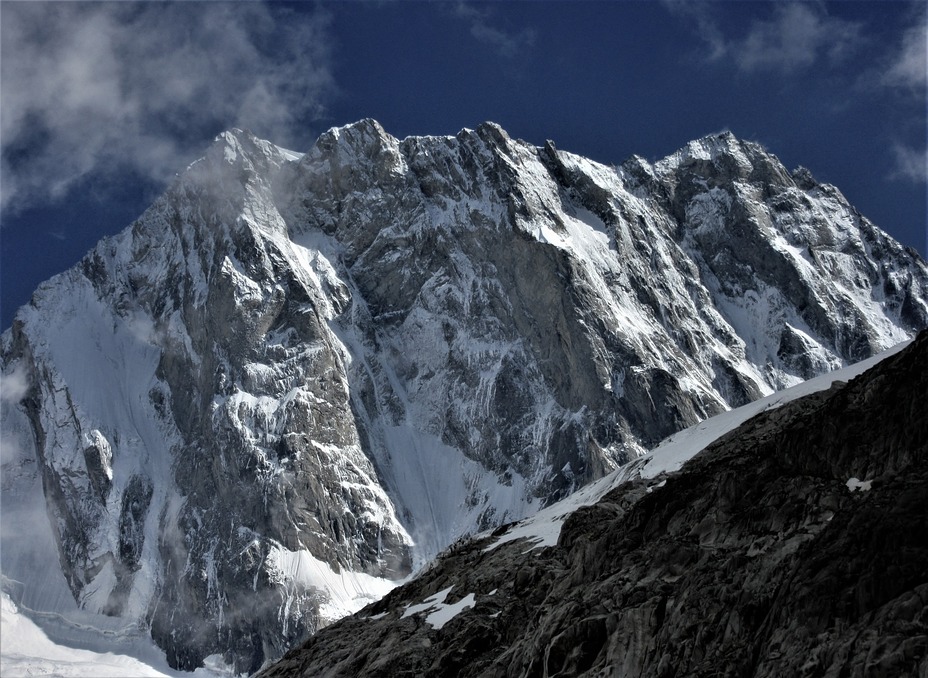
North side of Bashful Peak from near the summit of Bold Peak (6/22/2019)
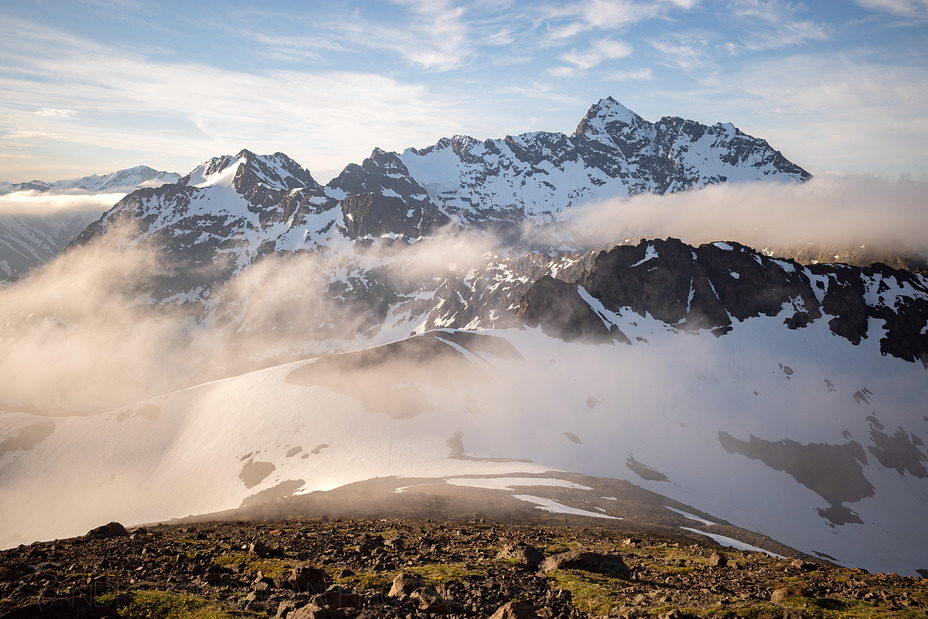
کل برف کاغذی دنا
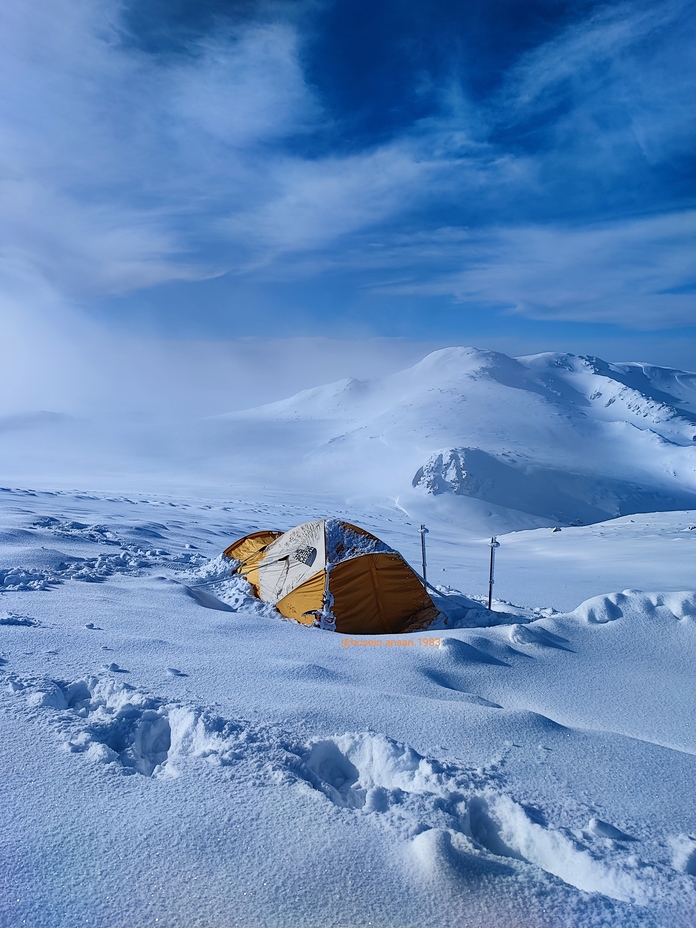
Denali

Tetnuldi knife
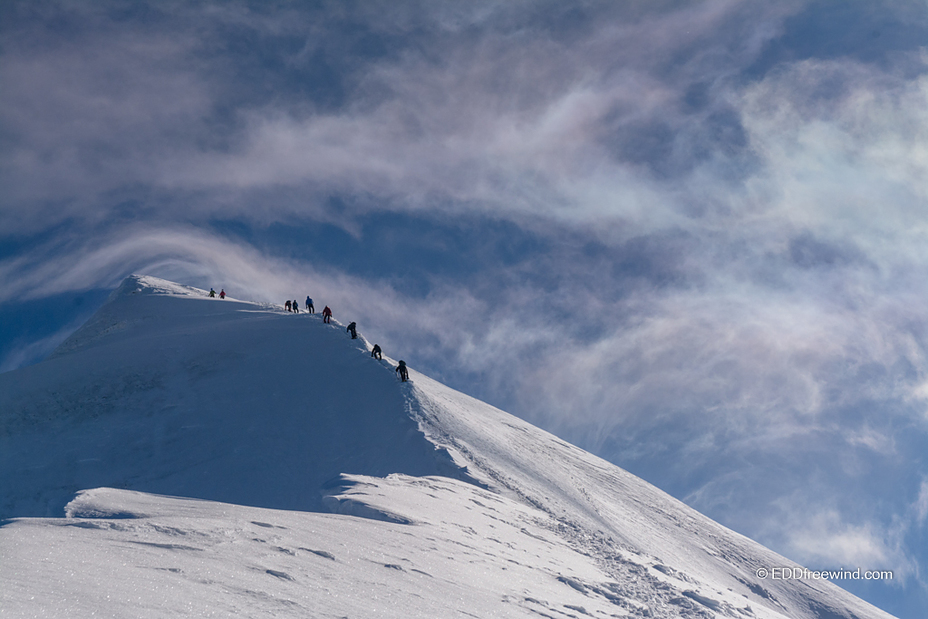
Khustup
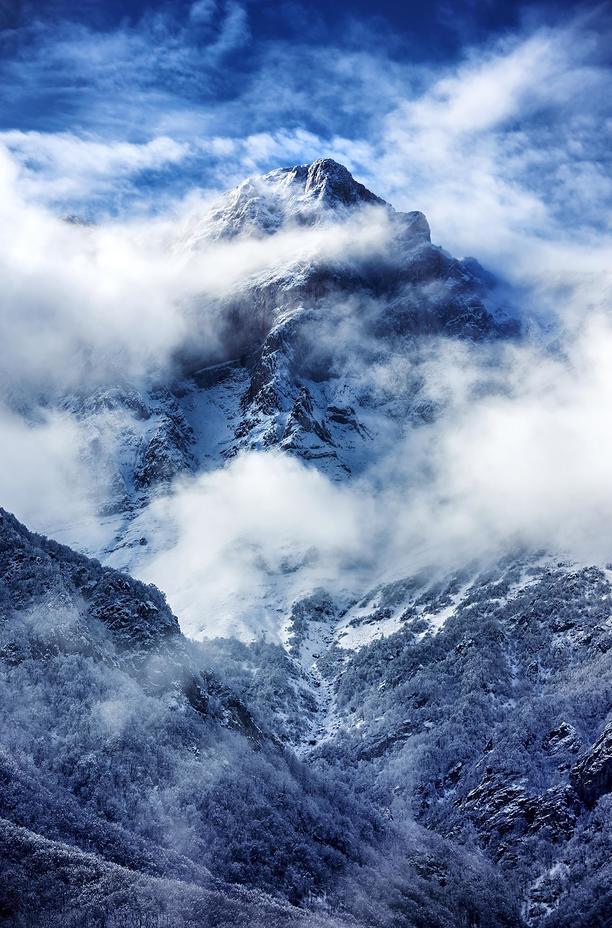
Cholatse South East ridge

A break in the cloud

Dedicated mountain weather forecasts for more than 17800 major summits for climbers and mountaineers, provided for up to eight different elevations.
For each mountain, we track nearby weather stations reporting live observations multiple times per day, giving you real-time conditions alongside our forecasts. Gather all available information before heading out for climbing, mountaineering, or any mountain pursuit.
Our proven weather technology also powers Snow-Forecast.com and Surf-Forecast.com, trusted by millions worldwide. While our forecasts are thoroughly tested and reliable, we recommend cross-referencing multiple sources when planning your ascent—as you would with any mountain weather service.
With thousands of peaks in our database, we welcome your feedback on location details (coordinates, elevations, etc.) to keep improving accuracy for the global climbing community. Send your feedback.